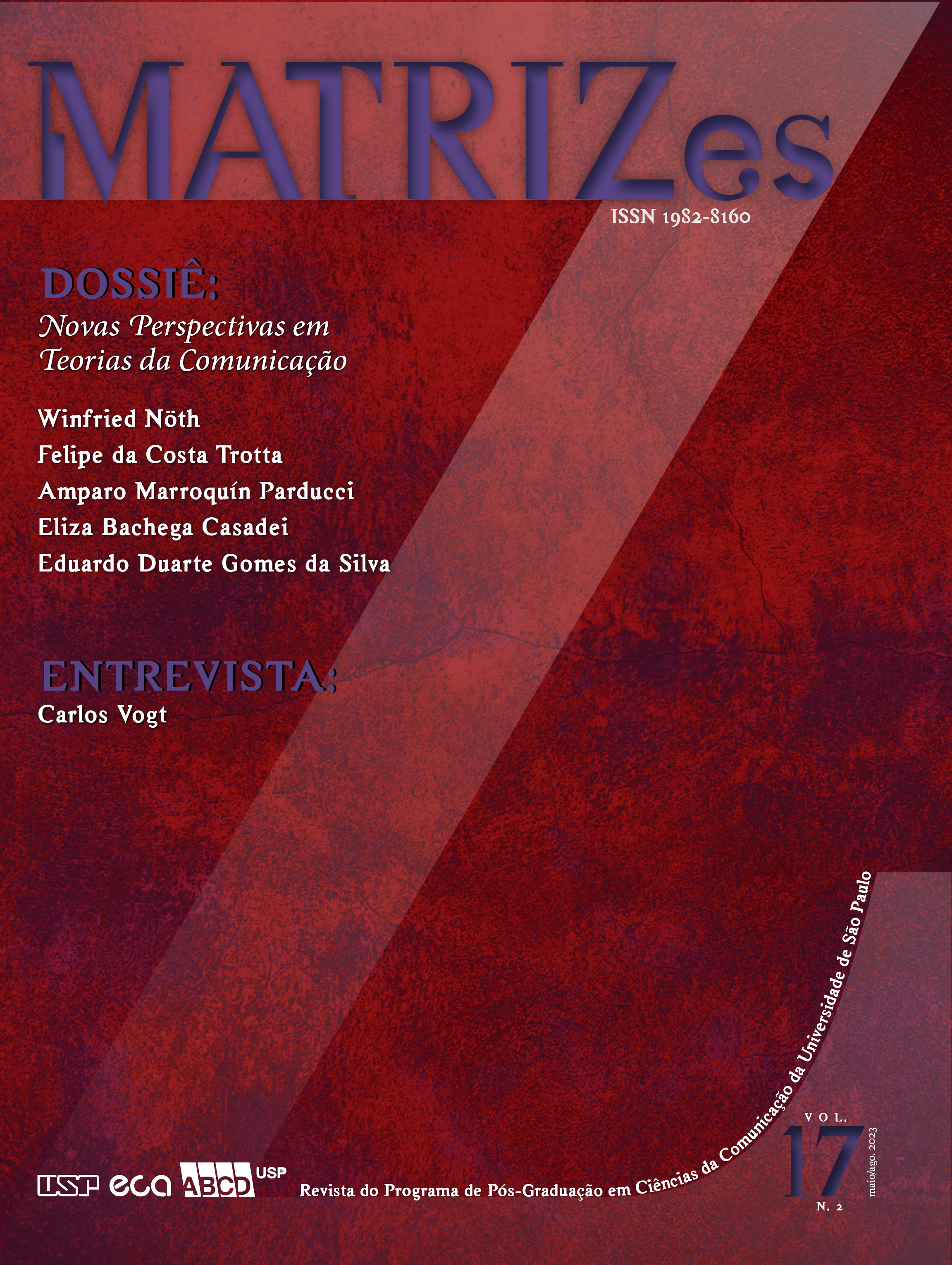Listening beyond the Anthropocene: Poetry as an echological survival
DOI:
https://doi.org/10.11606/issn.1982-8160.v17i2p191-204Keywords:
Anthropocene, Sound art, Ecology, Contemporary art, Cultural studiesAbstract
From the analysis of Poetry as an echological survival by sound artist Nuno da Luz, we reflect upon forms of environmental and echological involvement. This exhibition proposes a sensorial alternative to the critical discussion around Anthropocene narratives, answering some of the critics of this concept. Sound art plays an important role given its material characteristics and the fact that it complements the Western world-view, which privileges vision. The way the work of Nuno da Luz creates a being-in-the-world in which visitors are penetrated by sound waves proposes a redefinition of our ecological condition, hence creating an “echological survival”.
Downloads
References
Adorno, T., & Horkheimer, M. (2016). Dialectic of Enlightenment (J. Cumming, Trans.). Verso Books. (Original work published 1944)
Castree, N. (2015). Unfree Radicals: Geoscientists, the Anthropocene, and Left Politics. Antipode, 49(1), 52-74. https://doi.org/10.1111/anti.12187
Crist, E. (2013). On the Poverty of Our Nomenclature. Environmental Humanities, 3, 129-147. https://doi.org/10.1215/22011919-3611266
Escola das Artes – UCP. (2019a). Interview | Nuno da Luz · Poetry as an echological survival [Video]. https://www.youtube.com/watch?v=hUAXeIAXzpI
Escola das Artes – UCP. (2019b). Interview | Comandante Pires Barroqueiro, Sobre Poetry as an echological survival [Video] https://www.youtube.com/watch?v=mQtvvZiXX8A
Hartley, D. (2015, August 31). Against the Anthropocene. Salvage Zone.
https://salvage.zone/against-the-anthropocene
Latour, B. (2014). Anthropology at the Time of the Anthropocene – a personal view of what is to be studied [Comunicação]. American Association of Anthropologists. http://www.bruno-latour.fr/sites/default/files/139-AAA-Washington.pdf
Nancy, J.-L. (2007). Listening (C. Mandell, Trans.). Fordham University Press. (Original work published 2002)
Santos, B. S. (2016). Epistemologies of the South: Justice against Epistemicide. Routledge.
Schopenhauer, A. (1991). Il Mondo come Volontà e Rappresentazione (G. Vattimo, Trans.). Mursia. (Original work published 1819)
Simon, Z. B. (2020). The limits of Anthropocene narratives. European Journal of Social Theory, 23(2), 184-199. https://doi.org/10.1177/1368431018799256
Smith, N. (1984). Uneven Development: Nature, Capital, and the Production of Space. The University of Georgia Press.
Snyder, G. (1969). Earth House Hold. New Directions Publishing.
Taylor, S., & Fernström, M. (2017). Acouscenic Listening and Creative Soundwalks: Evoking Memory and Narratives through Soundscape Exploration. Leonardo Music Journal, 27, 3-6.
Vergès, F. (2019). Capitalocene, Waste, Race and Gender. e-flux journal, 100. https://www.e-flux.com/journal/100/269165/capitalocene-waste-race-and-gender/
Voegelin, S. (2010). Listening to Noise and Silence. Continuum Books.
Whitehouse, A. (2015). Listening to Birds in the Anthropocene: The Anxious Semiotics of Sound in a Human-Dominated World. Environmental Humanities, 6, 53-71. https://doi.org/10.1215/22011919-3615898
Downloads
Published
Issue
Section
License
Copyright (c) 2023 João Pedro Amorim, Luís Teixeira

This work is licensed under a Creative Commons Attribution-NonCommercial-ShareAlike 4.0 International License.
Authors who publish in this journal agree to the following terms:
- Authors retain the copyright and grant the journal the right to first publication, with the work simultaneously licensed under the Creative Commons Attribution License (CC BY-NC-SA 4.0) which allows sharing of the work with acknowledgment of authorship and initial publication in this journal for non-commercial purposes.
- Authors are authorized to assume additional contracts separately, for non-exclusive distribution of the version of the work published in this journal (eg, publishing in institutional repository or as a book chapter), with acknowledgment of authorship and initial publication in this journal.






















